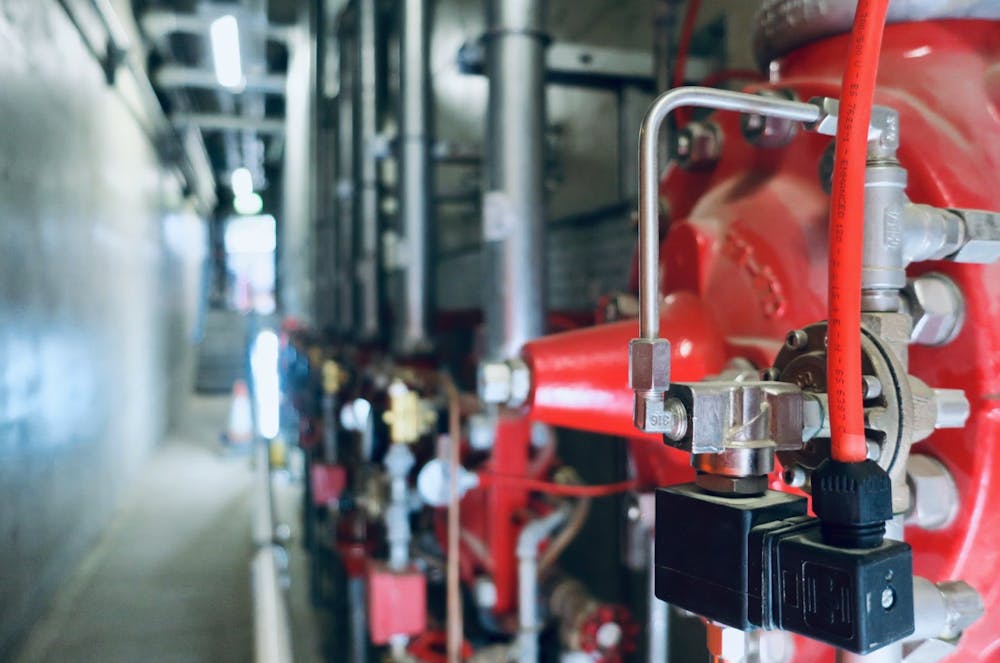Fire suppression systems use smoke or heat sensors to quickly identify and extinguish fires early, helping minimize property damage. Once activated, they release water or fire-fighting agents for extinguishment.
These devices help ensure the safety of occupants, prevent structural damage from disrupting business, and accelerate recovery times in data centers or other environments that need quick recovery times.
Fire Suppression
Fire suppression system Toronto is essential life safety technologies, defending both property and people against the devastating effects of fire. Johnson Controls offers comprehensive design, inspection, training, and associated services for these vital fire protection systems.
Sprinkler systems use an intricate network of pipes connected by sprinkler heads located throughout a building that activate when heat is detected, dispensing water into the fire zone to put out its flames and stop its spread. They're an economical, straightforward, and user-friendly choice suitable for commercial spaces as well as homes - they even work around electronics!
Other types of suppression systems work by dispensing inert gases into the environment in order to decrease oxygen levels to an insufficient level for combustion to continue, making these ideal systems for warehouses, industrial settings and manufacturing facilities that store flammable materials as they minimize clean up time without leaving behind water damage stains - plus they're especially good at protecting retail businesses with large inventory or high value merchandise!
Active Fire Protection
Fires cause devastating physical structures, costing owners and businesses millions in lost revenue and downtime. Although no structure can completely avoid fire's devastating impact, active and passive fire protection systems can reduce damage considerably while lessening its aftermath significantly.
An active fire protection (AFP) system detects, alerts and stops or suppresses fires through manual measures such as extinguishers or alarm systems as well as automated solutions such as sprinklers, hoses and inert gases like CO2 or halon stored in cylinders which trained professionals can use to smother flames. Furthermore, passive prevention measures like fireproof glass walls or floors provide enough time for people inside premises to escape safely if a fire does break out; providing occupants with enough time to escape safely before becoming an issue.
While an active system can protect people and equipment within a building, it cannot stop fire from damaging its structure itself. PFP solutions address this gap with systems built into or added onto structures to limit fire damage through restricting flame passage or reinforcing load-bearing elements to withstand damage from an extended fire event.
Passive Fire Protection
Active fire safety systems respond quickly when fire breaks out; passive measures aim to stop it before it even starts by using materials like cinder block walls and smoke baffles to help contain flames and prevent them from spreading further.
Passive fire protection measures are an integral component of fire safety in shopping malls, industrial buildings and other large commercial structures. While passive systems do not replace active systems for optimal fire safety measures, passive measures work hand in hand with active systems for maximum effectiveness.
An active and passive fire safety measure are often combined; for instance, sprinkler systems can act both actively and passively to keep people safe. They respond automatically when temperatures increase above certain thresholds and activate when flames or smoke is detected; but you could also add passive measures like fireproof glass and photoluminescent exit signs which don't rely on reaction from fire in order to function effectively.
Smoke Suppression
No matter the size or environment, fire suppression systems protect facility or building occupants by quickly eliminating flames and limiting property damage. These sophisticated fire safety systems use devices to detect smoke or excessive heat indicators like detectors/alarms/sprinkler systems as well as an overall control panel which oversees them all.
Sprinkler systems activate when they detect enough heat and/or smoke to indicate a fire, then release water over the area affected to extinguish flames and limit their spread. Other fire suppression agents include foam, inert gases (such as carbon dioxide or clean agents) or chemical compounds.
Many businesses that deal with combustible materials require fire safety systems, including manufacturing facilities, warehouses, storage spaces and restaurants. Schools also should invest in these systems for the safety of children as well as to prevent furnishings or equipment damage from potential fire hazards.


